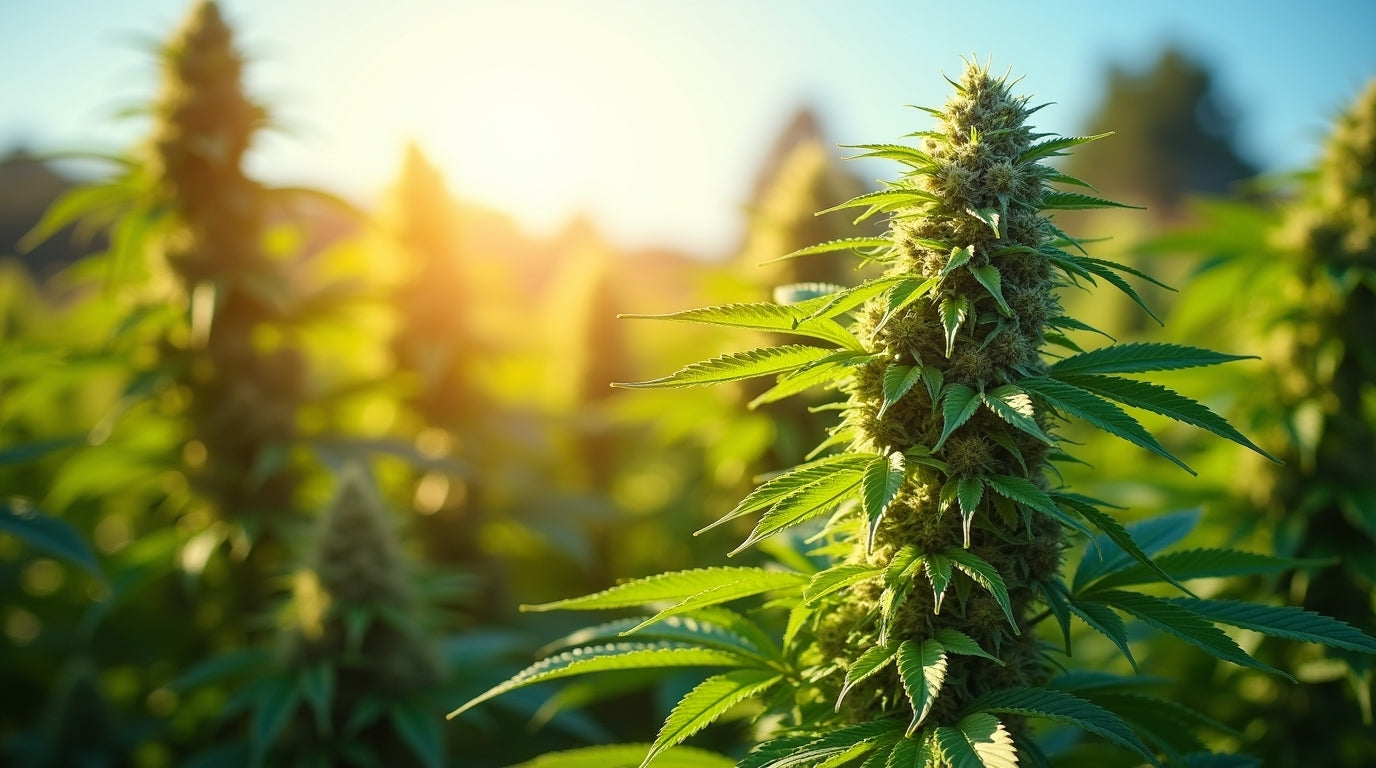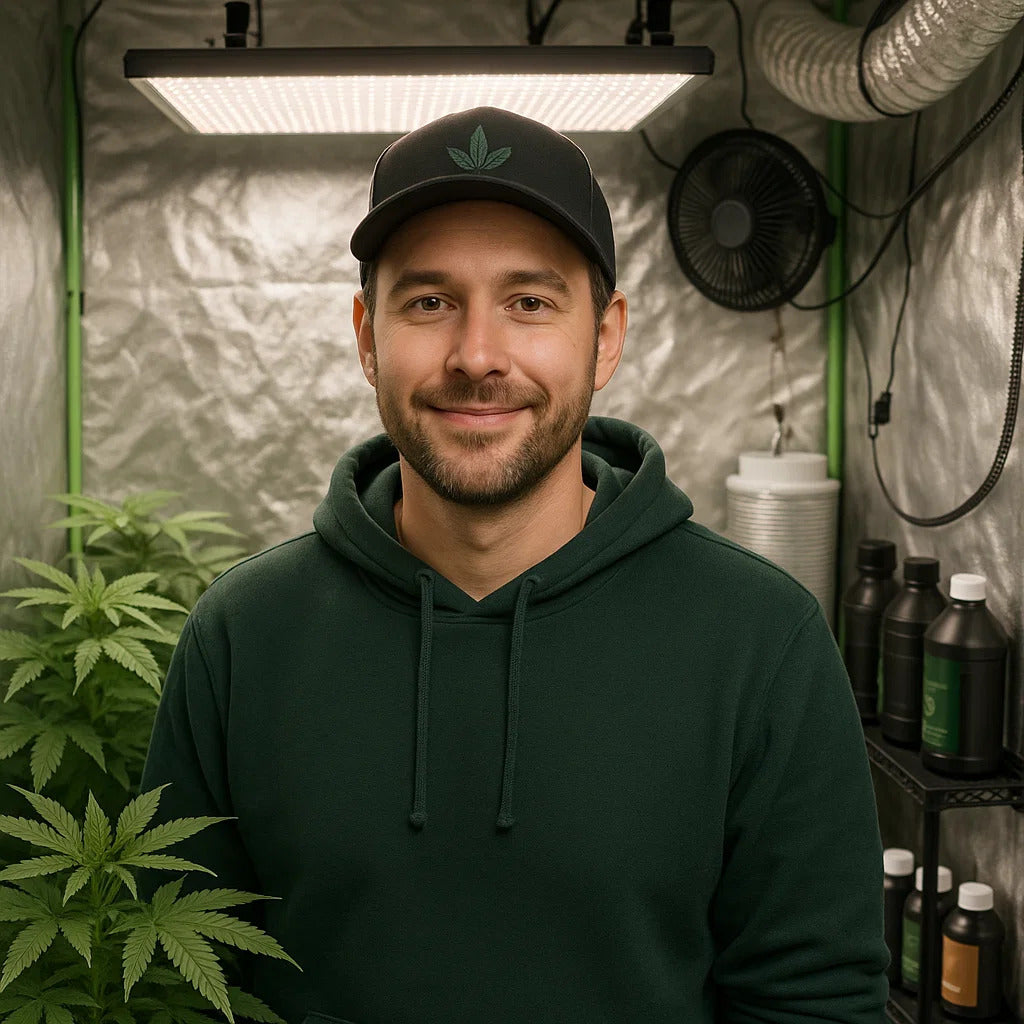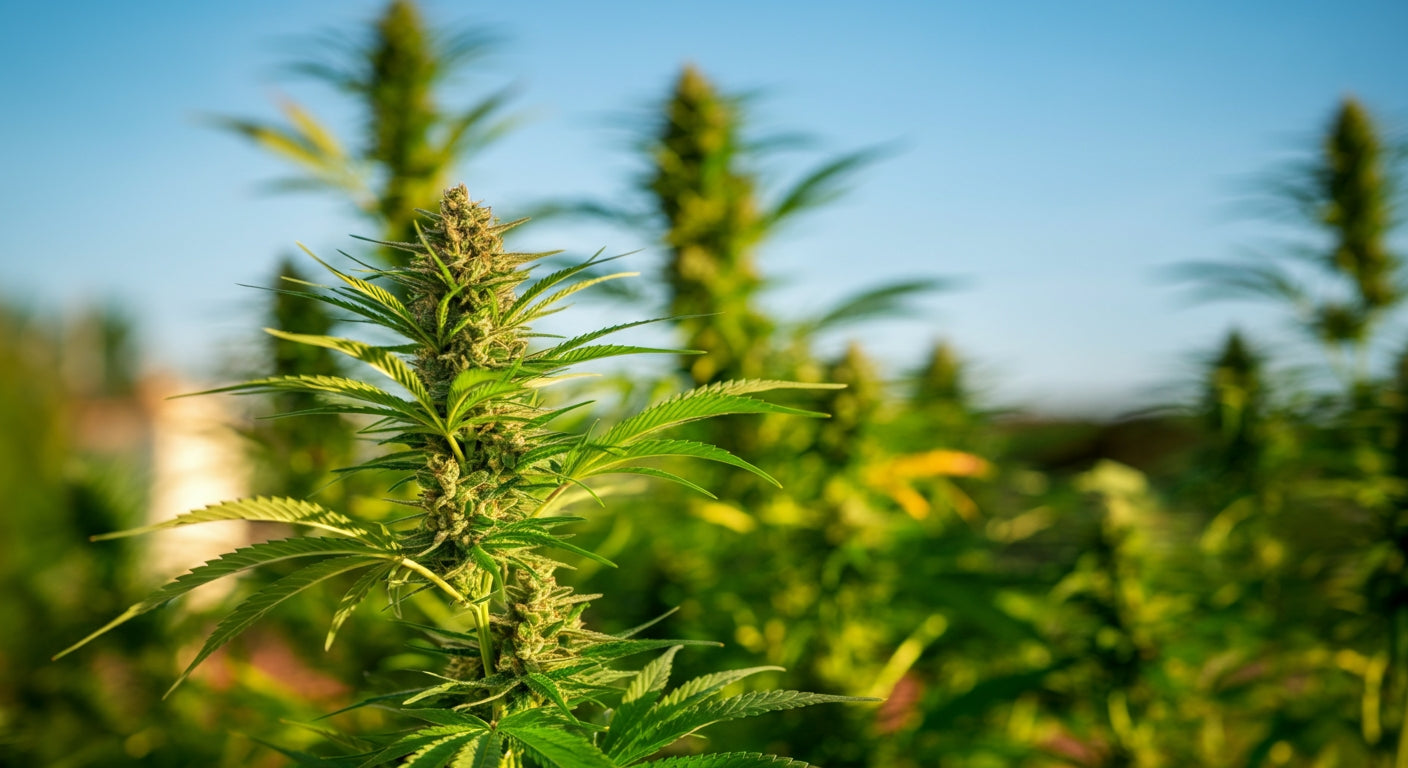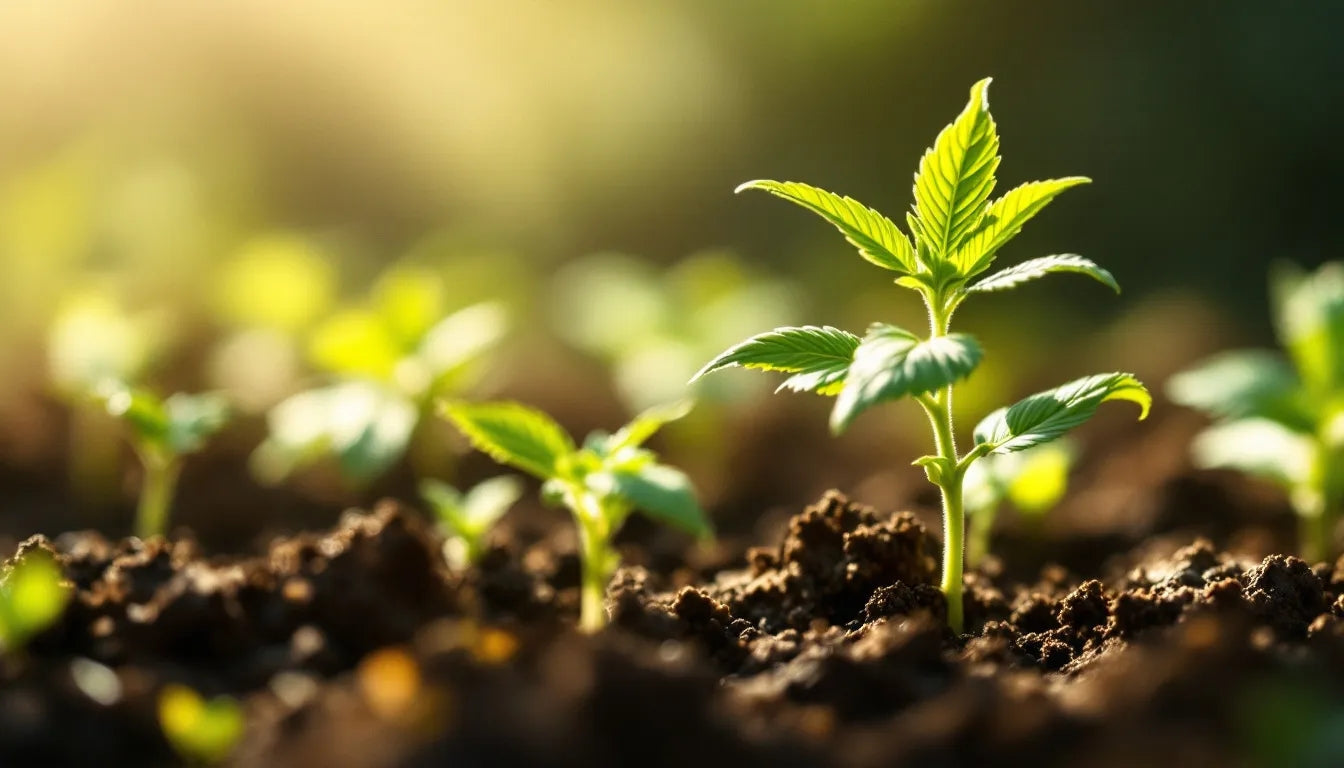
How Tall Do Weed Plants Grow? Your Complete Guide to Cannabis Plant Height
Understanding how tall cannabis plants grow is crucial for planning your growing space, choosing the right equipment, and maximizing your harvest. Cannabis height varies dramatically based on genetics, growing environment, and cultivation techniques, ranging from compact 1-foot autoflowers to towering 20+ foot outdoor monsters.
Whether you're planning an indoor or outdoor grow, the right grow tent kit provides the controlled environment and proper height clearance needed for optimal plant development at any size.
Cannabis Plant Height Ranges: What to Expect
The height of cannabis plants depends on several critical factors, with genetics being the primary determinant. Here's what you can expect from different growing scenarios:

Indoor Cannabis Heights
Indoor cannabis plants tend to be shorter due to space limitations, controlled lighting, and restricted root space. Here are the typical height ranges:
Standard Indoor Heights:
- Indica Strains: 2-4 feet (60-120 cm)
- Sativa Strains: 3-6 feet (90-180 cm)
- Hybrid Strains: 2.5-5 feet (75-150 cm)
- Autoflower Strains: 1.5-3.5 feet (40-100 cm)
Professional Indoor Averages: Indoor cannabis plants typically grow 2-6 feet tall and 2-4 feet wide, with most growers aiming for plants around 3-4 feet at harvest for optimal light penetration and yields.
Outdoor Cannabis Heights
Outdoor plants benefit from unlimited root space, natural sunlight, and longer growing seasons, allowing them to reach their full genetic potential.
Outdoor Height Ranges:
- Indica Strains: 4-8 feet (120-240 cm)
- Sativa Strains: 8-20+ feet (240-600+ cm)
- Hybrid Strains: 6-12 feet (180-360 cm)
- Autoflower Strains: 2-5 feet (60-150 cm)
Record Heights: Some outdoor cannabis plants have exceeded 20 feet in height and produced yields of 10+ pounds per plant under optimal conditions. Unless you're trying to keep your hobby under wraps, your outdoor crop may develop over 20 feet tall, with extreme cases reaching up to 34 feet.
Strain Genetics: The Primary Height Determinant
The genetics of your cannabis strain is the single most important factor determining final plant height. Understanding the differences between strain types helps you choose varieties that fit your growing space.

Indica: Short and Bushy
Indica strains evolved in harsh mountainous regions and developed compact, resilient growth patterns.
Characteristics:
- Height: Typically 2-4 feet indoors, up to 8 feet outdoors
- Structure: Short, bushy, with thick stems and broad leaves
- Growing Pattern: Wide lateral branching with minimal stretch
- Ideal For: Limited height spaces and discreet growing
Benefits: Indica strains are perfect for indoor cultivation in small grow tents where height is limited.
Sativa: Tall and Slender
Sativa strains developed in warmer climates with longer growing seasons, resulting in tall, stretchy plants.
Characteristics:
- Height: 3-6 feet indoors, 8-20+ feet outdoors
- Structure: Tall, slender, with thin leaves and open branching
- Stretch Factor: Can triple in height after switching to flowering
- Growing Time: Longer vegetative and flowering periods
Challenge: Sativa plants can triple in height after the switch to flowering stage, so it's common to end up with a Sativa plant that's far taller than expected.
Autoflower: Compact and Fast
Autoflower strains contain ruderalis genetics, which naturally keeps plants small and fast-growing.
Characteristics:
- Height: 1.5-3.5 feet in most conditions
- Timeline: 8-12 weeks from seed to harvest
- Structure: Compact with a dominant main cola
- Light Independence: Flowers automatically regardless of light schedule
Advantage: Autoflowering plants typically stay very short, between 24 to 36 inches, making them ideal for height-restricted grows.
Learn more about choosing the right strains in our comprehensive guide on how to grow cannabis indoors.
Factors That Influence Cannabis Plant Height
While genetics set the foundation, multiple environmental and cultivation factors significantly impact final plant height.
Growing Medium and Container Size
Container Impact: Smaller pots (restricting root size) will help keep plants smaller, while larger containers allow for bigger plants.
Size Guidelines:
- 1-gallon pots: Keep plants small (2-3 feet)
- 3-gallon pots: Produce mid-size plants (3-5 feet)
- 5+ gallon pots: Can produce large plants (5+ feet)
Growing Medium Effects: Plants tend to stay smaller in soil compared to coco coir or hydroponic systems, which promote faster, more vigorous growth.
Lighting Conditions
Light intensity and spectrum play a major role in determining plant height. Insufficient lighting can lead to tall, leggy plants as they stretch towards the light source.
Light Stress Response: Plants stretch when they detect they're growing beneath taller plants, causing them to reach upward seeking more light.
Professional Lighting: Quality grow lights from grow tent kits provide optimal spectrum and intensity to prevent unwanted stretching.
Vegetative Period Length
The longer plants remain in vegetative growth, the taller they become. Indoor growers control this timing precisely.
Timing Control: We recommend indoor grows flower their plants at 15-18 inches tall, assuming plants will at least double in size within the first two weeks of flowering.
Flowering Stretch: Cannabis plants will generally double in height after switching to a 12-12 light schedule to induce flowering, although some sativa dominant strains can even triple in height.
Height Control Techniques: Managing Plant Size
Experienced growers use various training techniques to control plant height while maximizing yields.
Low-Stress Training (LST)
LST involves gently bending and securing branches to create a more horizontal growth pattern.
Method: Tie down the main stem and branches to encourage lateral growth instead of vertical stretching.
Benefits:
- No recovery time needed
- Increases bud sites
- Keeps plants under height limits
- Improves light distribution
Space Requirements: Plants trained with LST typically need 2 square feet per plant for optimal results.
Screen of Green (SCROG)
SCROG uses a screen or net to train plants to grow horizontally through a grid system.
Setup: Position the screen around 20cm above the base of your plants and weave branches through as they grow.
Advantages:
- Maximum Light Efficiency: All buds receive equal light exposure
- Height Control: Keeps canopy at uniform level
- Space Optimization: One plant can fill a 4x4 grow tent effectively
Ideal Height: Most growers flip to flowering when the screen is 75% full with branches and shoots.
Topping and FIMing
These high-stress techniques involve removing or damaging the main growing tip to redirect growth hormones.
Topping: Completely remove the main growing tip to create two main colas.
FIMing: Remove about 75% of the growing tip, potentially creating 2-4 new main colas.
Timing: Best performed during vegetative growth when plants have developed 5-6 nodes.
Super Cropping
This technique involves gently crushing the internal structure of branches without breaking the outer skin.
Effect: Reduces height while strengthening branches and increasing bud production.
Recovery: Plants typically recover within a few days and continue growing more vigorously.
Grow Tent Height Requirements
Choosing the right grow tent height is crucial for accommodating your plants plus all necessary equipment.
Standard Grow Tent Heights
Common Heights:
- 5-6 feet: Suitable for autoflowers and heavily trained plants
- 6.5-7 feet: Standard height for most indoor grows
- 8+ feet: Ideal for taller plants and maximum flexibility
Equipment Considerations: Remember to account for lighting fixtures, carbon filters, and ducting that will reduce available plant height by 18-24 inches.
Height Recommendations by Strain Type
For Autoflowers: 5-6 foot tents provide adequate space For Indica Strains: 6.5-7 foot tents offer comfortable growing room
For Sativa Strains: 7-8+ foot tents prevent height issues For Untrained Plants: Always choose taller tents to accommodate natural growth
Professional Tip: A large grow tent with adjustable height extensions provides maximum flexibility for any strain or growing method.
When to Switch to Flowering: Timing for Height Control
Understanding when to initiate flowering is crucial for managing final plant height in indoor grows.
Height Guidelines by Strain
General Rule: Flip plants to flowering when they reach half your desired final height.
Strain-Specific Timing:
- Indica: Can flower at 18-24 inches for 3-4 foot final height
- Sativa: Should flower at 12-15 inches to prevent excessive stretch
- Hybrid: Usually safe to flower at 15-18 inches
Space Calculations
Available Height Formula: Total Tent Height - Light Fixture (18") - Ducting/Filter (12") - Pot Height (8") = Available Plant Height
Example: 7-foot tent: 84" - 38" equipment = 46" maximum plant height
Safety Margin: Always leave 6-12 inches buffer between plant tops and lights to prevent light burn.
Frequently Asked Questions About Cannabis Plant Height
How tall do indica vs sativa plants grow?
Indica plants typically grow 2-4 feet indoors and up to 8 feet outdoors, while sativa plants can reach 3-6 feet indoors and 8-20+ feet outdoors. The difference comes from their evolutionary origins: indicas developed in harsh mountain climates favoring compact growth, while sativas evolved in tropical regions with longer growing seasons.
Can you control how tall cannabis plants grow?
Yes, plant height is highly controllable through training techniques (LST, SCROG, topping), container size, vegetative period length, and strain selection. Indoor growers have near-complete control over final plant height through these methods.
How much do cannabis plants stretch during flowering?
Most cannabis plants double in height during the first 2-3 weeks of flowering, though sativa-dominant strains can triple in height. This "flowering stretch" is why experienced growers flip to flowering when plants are roughly half their desired final height.
What size grow tent do I need for different plant heights?
For plants finishing at 3-4 feet, a 6.5-7 foot tent works well. For taller plants or untrained growth, 8+ foot tents provide necessary clearance. Always account for 18-24 inches of equipment space at the top of your tent.
Do autoflower plants stay shorter than photoperiod plants?
Yes, autoflowering plants typically stay much shorter due to their fixed lifecycle and ruderalis genetics. They usually reach 1.5-3.5 feet compared to photoperiod plants that can reach 6+ feet indoors or 20+ feet outdoors.
How do I prevent my plants from getting too tall?
Use training techniques like LST or SCROG, choose shorter strains (indica/autoflower), use smaller containers, reduce vegetative time, and flip to flowering early. These methods help maintain plants within your available space.
Growing Different Heights: Matching Plants to Space
Successfully matching plant varieties to available space ensures optimal results without height-related problems.
Small Space Growing (Under 6 Feet)
Best Choices:
- Autoflower strains
- Indica-dominant varieties
- Heavily trained plants using SCROG/LST
Equipment: Small grow tents with efficient LED lighting work perfectly for compact grows.
Medium Space Growing (6-7 Feet)
Suitable Options:
- Most hybrid strains
- Lightly trained sativas
- Multiple small plants (SOG method)
Setup: Standard grow tents accommodate most growing methods and strain types comfortably.
Large Space Growing (8+ Feet)
Optimal For:
- Untrained sativa strains
- Large trained plants
- Maximum yield setups
Investment: Large grow tents with height extensions provide ultimate flexibility for any growing style.
Advanced Height Management Strategies
Professional growers combine multiple techniques for precise height control and maximum yields.
Perpetual Harvest Systems
Staggered Growing: Maintain plants at different growth stages to optimize space usage and ensure continuous harvests.
Height Zones: Use different areas of your grow space for different height plants, from seedlings to flowering plants.
Multi-Level Growing
Vertical Integration: Utilize grow tent accessories like shelving systems to grow plants at multiple levels.
Light Distribution: Ensure adequate lighting for each level while maintaining proper height management.
Summary: Mastering Cannabis Plant Height
Quick Answer: Cannabis plants grow 1.5-3.5 feet for autoflowers, 2-6 feet for indoor photoperiod plants, and 4-20+ feet for outdoor plants. Height depends primarily on genetics (indica shorter, sativa taller), but can be controlled through training techniques, container size, and timing.
Key Takeaways: Successful height management combines strain selection, proper equipment, and training techniques. Indoor growers have nearly complete control over plant height, while outdoor growers work within genetic limits but can still influence final size.
Plan Your Perfect Height Setup
Ready to grow cannabis at the ideal height for your space? Success starts with choosing the right genetics and equipment for your specific height requirements.
Explore our complete range of grow tent kits designed to accommodate every plant height from compact autoflowers to towering sativas. Each kit includes proper lighting, ventilation, and height clearance for optimal growth.
Want to learn more about cultivation techniques? Check out our guides on cannabis grow stages and growing weed plants to master every aspect of plant development.
For specialized applications, consider our hydroponic grow systems that provide precise control over plant nutrition and development, helping you achieve consistent results regardless of plant height.
Remember: the best cannabis grows come from matching your plants to your space and using proper techniques to optimize both height and yield. With the right knowledge and equipment, you can successfully grow healthy, productive plants at any height your space allows.

Lena Myles
I'm a mushroom enthusiast and home cook based in Oregon. I'm passionate about foraging and creating fungi-focused recipes, especially delicious, plant-based dishes using gourmet mushrooms like trumpet, shiitake, and oyster. When I’m not in the kitchen, you’ll usually find me wandering the woods in search of new wild flavors.


